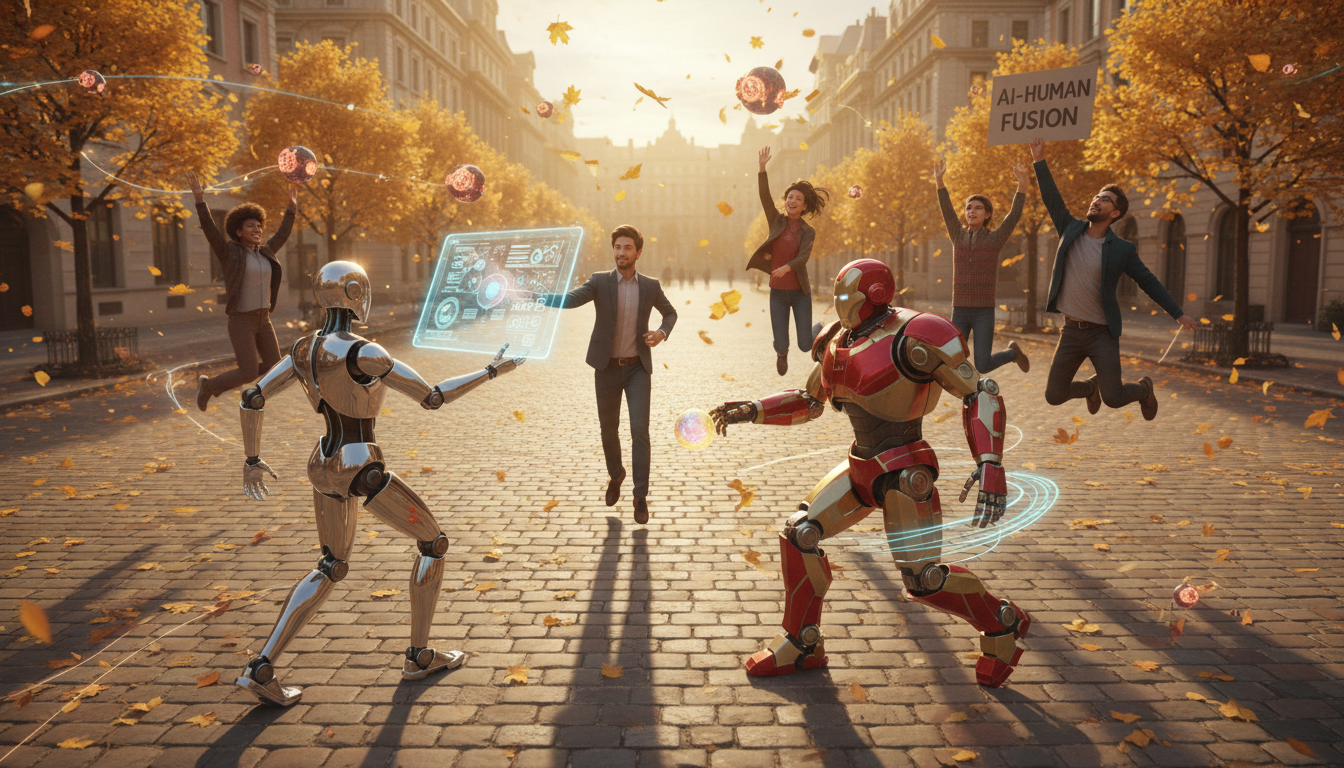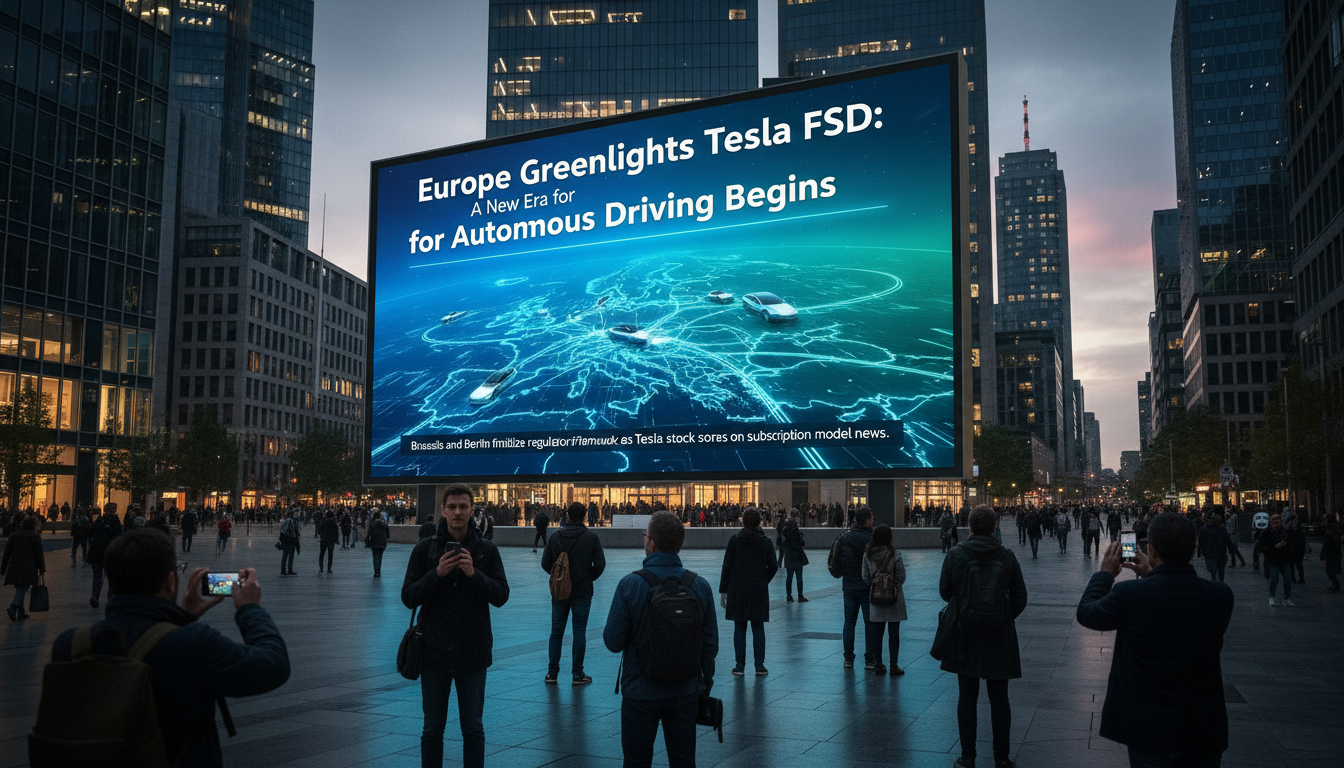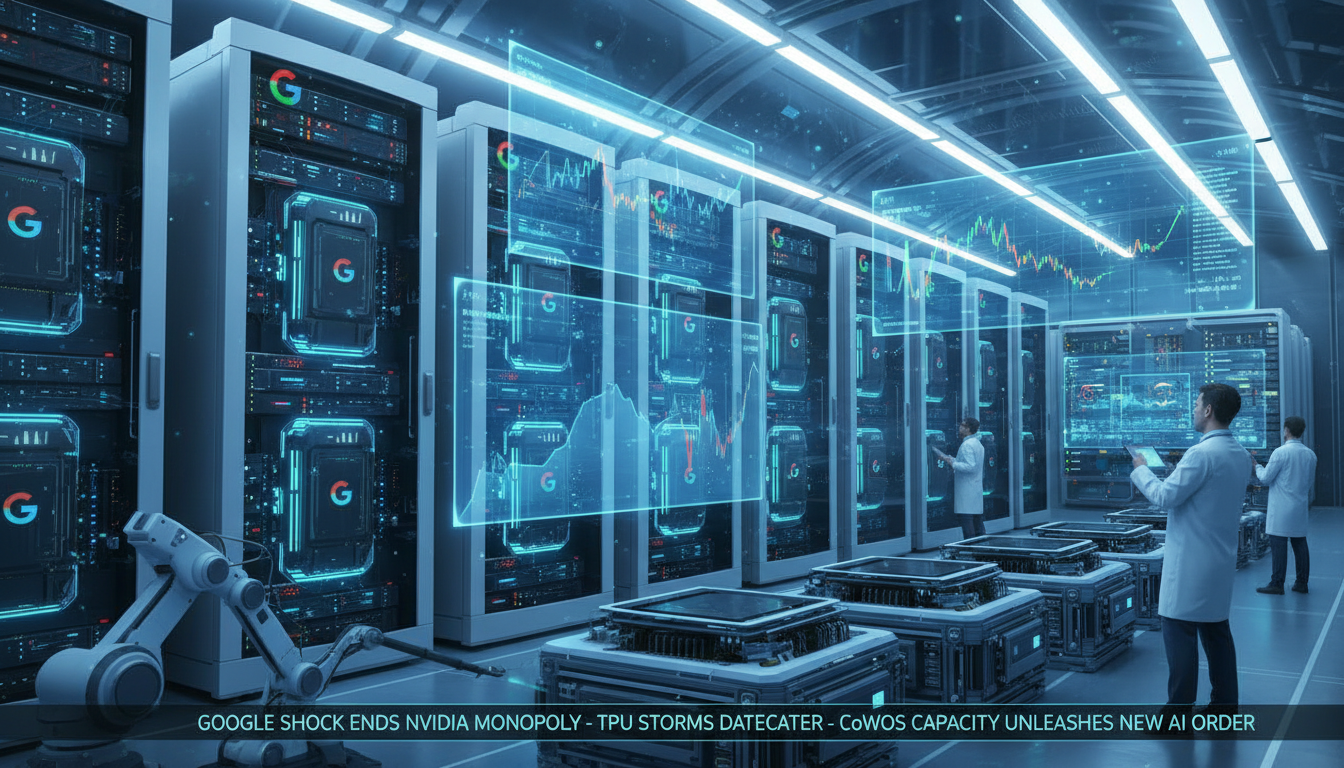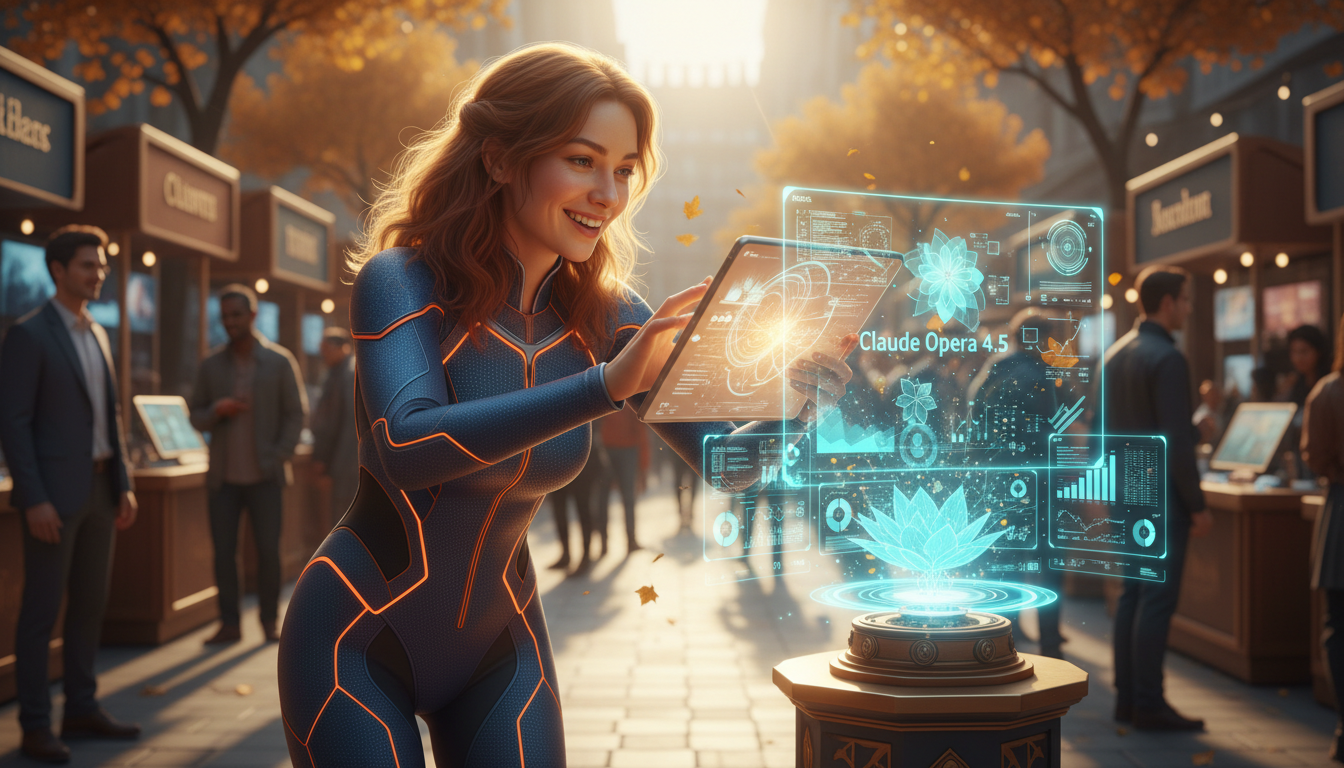● AI Disruption, Consulting Chaos, Profit Surge
The Impact of AI Innovation and Digital Transformation on the Consulting Market and Economic Outlook
Main Points of the Article
Recently, generative AI and digital transformation at the center of the global economy and the Fourth Industrial Revolution have brought rapid changes to the revenue models and work methods of consulting firms.
Large consulting firms such as Accenture, McKinsey, and Boston Consulting Group have achieved tremendous revenue growth through AI adoption, but at the same time, clients are increasingly utilizing AI agents on their own, reassessing the need for traditional consulting services.
This article systematically analyzes the positive and negative ripple effects of AI innovation on the consulting industry, the internal utilization of AI agents, and the emergence of new consulting services from startups, along with the economic outlook and AI trends.
1. The Success of AI Adoption by Large Consulting Firms and Economic Outlook
In recent years, large consulting firms have actively adopted AI and generative AI to maximize operational efficiency.
For Accenture, it is expected that contracts related to generative AI will increase from $300 million in 2023 to $3 billion in 2024, and $5.9 billion in 2025, which is interpreted as a strong signal for the economic outlook in the era of digital transformation.
Boston Consulting Group generates 20% of its revenue from AI-related consulting services, and this ratio is expected to reach 40% by 2026.
Additionally, McKinsey & Company has successfully introduced its own AI chatbot ‘Lily’, reducing employee work time by 30%, thus maximizing internal efficiency and securing a competitive edge in the global economic market.
In this way, AI innovation and digital transformation have a significant impact on economic outlook and global economic trends, and companies that effectively integrate AI technology are expected to achieve even stronger growth in the future.
2. Changes in Revenue Models and Internal Innovation of Consulting Firms
The traditional consulting model has relied on cost estimation based on the number of personnel and project duration, but the expansion of business automation through AI agents poses a challenge to this model.
McKinsey, Boston Consulting Group, Deloitte, and PwC have built thousands of AI agents internally to quickly process various tasks such as consulting work, document summarization, data analysis, and PPT creation.
For example, Boston Consulting Group’s ‘Dexter’ slide editor helps consultants create presentations in just a few minutes, proving to be highly efficient among employees.
However, behind this efficiency enhancement lies the urgent transformation of the workforce structure and revenue model of traditional consulting firms, which presents a crisis.
3. Market Restructuring Due to AI Adoption and the Emergence of Startups
As client companies can now utilize AI agents to perform consulting roles internally, reliance on existing large consulting firms is gradually decreasing.
In response, small consulting boutiques and former consultants are coming together to form new types of AI consulting startups like ‘Unity Advisory’.
Startups like ‘Zabie AI’ target existing large firms like McKinsey while focusing on specific areas like market research, strategy development, and executive coaching through a SaaS model, securing competitiveness based on high expertise.
Moreover, OpenAI is also entering the business of customized AI solution consulting with its AI as a Service model, showcasing the blurring lines between technology companies and the consulting field.
4. The Dual Nature of AI Utilization: Efficiency Enhancement vs. Crisis of Human Touch
The adoption of AI has undoubtedly led to revolutionary changes in operational efficiency, but it may also cause a gradual reduction in the unique insights, creativity, and human touch of consultants.
In the case of Deloitte, there have been instances where errors and hallucinations occurred during report work using AI chatbots, leading to refund demands from actual clients.
Should AI begin to replace traditional consulting processes, clients may place greater value on ‘accuracy’ and ‘human insights’, compelling traditional consulting firms to grapple with finding a balance.
5. Future Outlook and Conclusion
Now is the time for all industries and companies to pay attention to AI trends and digital transformation.
While large consulting firms have achieved significant short-term profits from AI adoption, the environment allowing clients to utilize AI themselves has made it unavoidable for long-term changes in their revenue models.
Therefore, in the era of global economy and the Fourth Industrial Revolution, it is important to reassess the market from diverse perspectives including AI innovation, economic outlook, restructuring of consulting firms, and new strategies from startups.
In the future, the harmonious collaboration between AI and human consultants, along with the provision of truly innovative insights, will likely be the key to competitiveness.
[Summary] Large consulting firms have recorded high profits through AI innovation and digital transformation, but as clients increasingly utilize AI agents directly, the traditional consulting model is being restructured. Consequently, AI-centered startups are emerging, accelerating changes throughout the consulting market, and balancing efficiency with human touch will be a future challenge. (Economic Outlook, AI Innovation, Digital Transformation, Global Economy, Consulting Firms)
[Related Articles…] Current Status of AI Innovation Future of the Consulting Market
*Source: [ 티타임즈TV ]
– AI에 일자리를 위협받는 경영 컨설턴트
● AI Era, Creativity Thrives Amidst Mistakes
How to Survive in the AI Era through Mistakes and Creativity – Economic Paradigms Created by Big Data, Fourth Industrial Revolution, and Digital Transformation
The Evolution of AI Technology and Innovations in Memory Function
Recently, AI has progressed beyond simply answering questions to learning our behaviors and preferences.
By utilizing the ‘memory’ feature in chat tools, AI can remember users’ conversation contents and preference information to provide personalized services.
This advancement plays a significant role in helping companies innovate customer experiences in the context of the global economy, the Fourth Industrial Revolution, and digital transformation.
In particular, the part where AI highlights our human aspects through mistakes and evolves in a way that complements creativity and emotion is a key point often overlooked in other news.
Transition to New Creation and Business Opportunities
With the use of AI tools, even ordinary people can now compose music or plan and produce within a minute.
This change is rapidly spreading across various fields, including content creation, design, and music, affecting not only existing professionals.
In particular, AI technology linked with big data quickly grasps market demands and provides the information consumers want while building personalized recommendation systems.
When individual emotions and creativity complement the efficiency of AI, differentiated content and business models are born.
Changes in Professions and Human Strengths in the AI Era
Although AI may assist in delivering professional information and in fields like education and healthcare, the unique human aspects of emotion and trust remain essential.
Those who can make mistakes, namely humans with warm emotions and creativity that AI cannot replicate, will have advantages in job selection.
Even established high-income professions like lawyers and doctors may experience increased efficiency through collaboration with AI, or may be required to adapt accordingly.
Thus, equipping oneself with a unique set of differentiated skills in the rapidly changing global economy will be the key survival strategy for the future.
AI Utilization Skills – Experience is the Answer
In the AI era, finding ‘my own method of utilization’ through practical experience rather than just theoretical knowledge is crucial.
The process of engaging in repeated conversations with chat AI and improving results from 80-90 points fosters creative problem-solving and enhances job competitiveness.
Ultimately, AI is a tool that continuously learns and evolves rather than providing a perfect answer, and how effectively it is utilized will be the pivotal factor in future economies and personal career growth.
This perspective signifies that we all need to rapidly adapt to the trends of digital transformation and the Fourth Industrial Revolution.
Key Summary and Future Outlook
The advancement of AI technology provides personalized services by learning user experiences and emotions rather than merely answering questions.
The fields of creation and business models are evolving into environments where anyone can easily access and succeed, thanks to the integration of AI, big data, and digital transformation.
In existing professional fields, human emotions and the creativity born from mistakes are emerging as significant differentiating factors that AI cannot match.
Therefore, to survive in the AI era, it’s essential to cultivate the ability to utilize AI as a tool based on one’s passion and creativity.
< Summary >
AI has now stepped beyond simply providing information to learning individual user experiences and preferences.
The value of ‘those who make mistakes’ based on creativity and emotion is becoming prominent, with a close connection between the global economy, the Fourth Industrial Revolution, big data, and digital transformation.
In the professional world, the ability to effectively collaborate with AI will become a competitive edge, and learning how to utilize AI through experience will be the core strategy for the future.
[Related Articles…]
- Global Economic Outlook in the AI Era
- Strategies for the Fourth Industrial Revolution and Digital Transformation
*Source: [ 지식인사이드 ]
– 미래에 AI를 뛰어넘는 사람은 오히려 ‘실수하는 사람’입니다 | 상국열차 EP.7 (김덕진 소장)
● AI Revolution Game-Changer Robots Transforming Global Economy
Global AI and Robotics Innovation Announcing a New Era: Latest Trends and Economic Ripple Effects of AgiBot, XPENG, and Toyota
Main Innovation Points and Economic Impact
Today’s news introduces the innovative humanoid robots and AI-based mobility solutions we can encounter in the real world. AgiBot A2 operates naturally among the public, while XPENG’s IRON robot demonstrates incredible technology by learning human dance movements in just 2 hours. Toyota’s WalkMe is an AI mobility innovation capable of climbing stairs and maintaining its balance autonomously based on the environment. This article systematically analyzes the features, operating systems of the latest robotics technologies, and their impact on the global economy and automation industry within the context of economic forecasts and the Fourth Industrial Revolution. In particular, it highlights practical solutions that businesses can utilize in real-world operations beyond mere technological demonstrations.
AgiBot A2 – A Humanoid Robot Accessible to All
• AgiBot A2 is designed with ergonomics in mind, with a height of 169 cm and a weight of 69 kg, enabling natural interactions.
• It is equipped with the latest AI system and a conversational LLM (large language model) for real-time voice interactions and can integrate with business-specific knowledge bases through RAG (Retrieval-Augmented Generation).
• It boasts a 96% background noise cancellation capability and 99% accuracy in facial recognition and lip-reading, showcasing stable performance even in complex environments.
• With features like the 3D SLAM mapping system and vector flux control algorithms, it has autonomous driving capabilities for smooth movement in intricate spaces.
• Economically, it is expected that the increasing global demand for automation and AI investments will have a significant impact on the relevant global economy, robotics, and AI innovation investment sectors.
XPENG’s IRON Robot – Quick Learning and Human-like Movements
• XPENG has introduced the IRON robot, showcasing a ‘comprehensive imitation learning’ technique that allows it to learn human dance movements in just 2 hours.
• The exposed metal frame and 82 degrees of freedom in motion achieve movements that are much more natural compared to existing robots, displaying human-like actions.
• The AI brain combines three multimodal systems—VLT, VLA, and VLM—to form a closed loop across vision, language, and action comprehensively.
• Notably, its spinal structure closely resembles that of humans, allowing for natural coordination between the upper and lower body, making it an innovative target for technology investments in automation and robotics.
• Controversial aesthetic elements (e.g., feminine design characteristics) also serve as experimental research that enhances emotional interactions with humans, strategically raising customer accessibility and garnering positive responses in the market.
Toyota WalkMe – The Next-Generation Mobility Solution with AI
• WalkMe, introduced by Toyota, is an innovative conceptual product that overcomes the limitations of traditional wheelchairs, allowing stable movement even on trapezoidal stairs and uneven terrain.
• Each of the four legs is equipped with sensors and actuators to analyze the terrain in real time and generate appropriate movements.
• LAR, radar, weight sensors, and an automatic balancing system ensure optimal safety and stability.
• A fully charged battery and a simple remote control system enhance user convenience, particularly showcasing the integration of welfare and technology investment for the elderly and disabled as a mobility solution.
Connections to Economic and Technological Trends
• Amid global economic instability and concentrated discussions on the future industrial changes brought about by automation and AI innovation, these technological advancements serve as a foundation for strengthening competitiveness across industries and creating new markets.
• Investors are exploring new business models centered around key terms such as AI innovation, automation, robotics, the global economy, and tech investment.
• Such technological advancements are expected to extend beyond initial demonstrations to include business service automation, enhancements in customer experiences, and cost reduction effects.
Key Points Readers Should Pay Attention To
• The AgiBot A2, which operates directly in real environments, signifies the first notable attempt at commercial utilization, moving beyond traditional research and development stages.
• XPENG’s IRON robot presents a groundbreaking change in imitation learning and introduces a new paradigm regarding AI’s quick learning abilities and human interactions.
• Toyota’s WalkMe has significant implications in its focus on innovating user experience beyond mere mobility assistance.
• These technologies will play crucial roles in the automation and AI innovation investments across industries, contributing to the recovery of the global economy and the infrastructure development for future technologies.
[Related articles…]AgiBot: A New Paradigm in Future Robot TechnologyToyota WalkMe: The Evolution of Next-Generation Mobility Innovation
*Source: [ AI Revolution ]
– New AI Robot Acts Shockingly Human in Public



